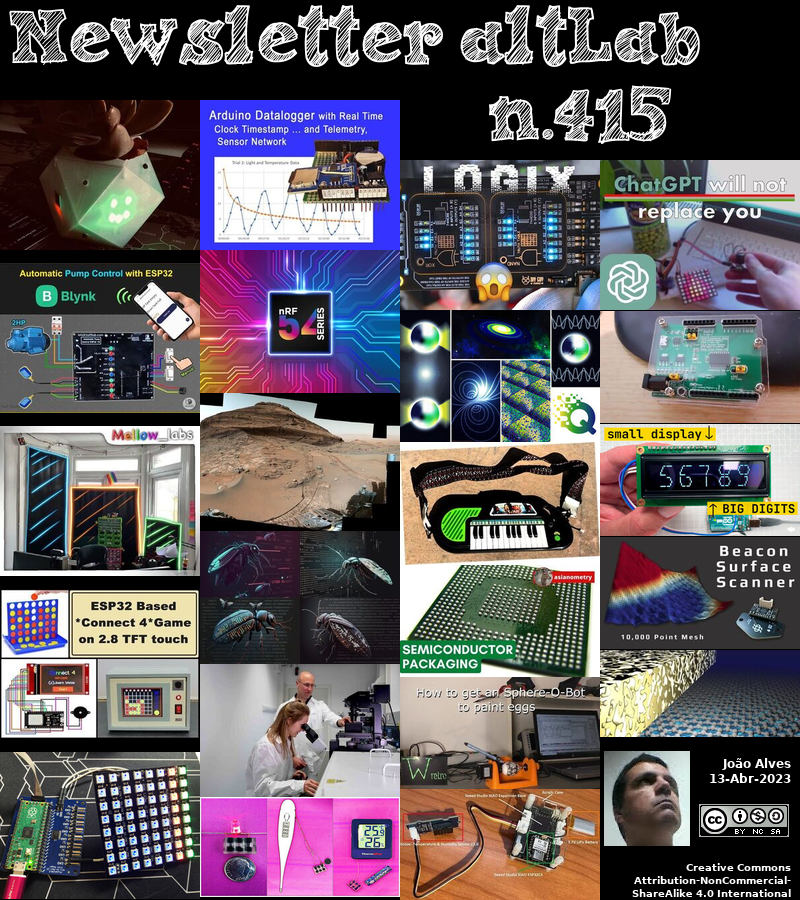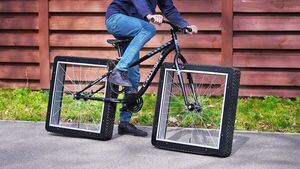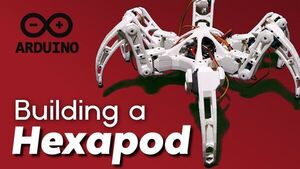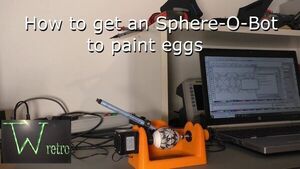2023-04-13 - Nº 415
Editorial
Esta é a Newsletter Nº 415 que se apresenta com o mesmo formato que as anteriores. Se gostar da Newsletter partilhe-a!
Todas as Newsletters encontram-se indexadas no link.
Esta Newsletter tem os seguintes tópicos:
Faz hoje anos que nascia, em 1748, o engenheiro e inventor inglês Joseph Bramah. Ele criou a loja de fabrico de fechaduras foi o berço da indústria britânica de máquinas-ferramentas. Central no início do fabrico e fabrico de eclusas vitorianas, influenciou quase todos os ofícios mecânicos da época. Tal como Henry Ford, a sua influência foi provavelmente maior para os processos de fabrico que desenvolveu, do que o próprio produto. Tirou a sua primeira patente sobre uma fechadura de segurança (1784) e em 1795 patenteou a sua prensa hidráulica, conhecida como prensa Bramah, utilizada para forjagem pesada. Concebeu uma máquina de impressão numérica para notas bancárias e foi um dos primeiros a sugerir a praticabilidade das hélices de parafuso e da transmissão hidráulica. Inventou máquinas de fresagem e aplainamento e outras máquinas-ferramentas, um motor de cerveja (1797), e um armário de água.
Faz também hoje anos que nascia, em 1771, o engenheiro mecânico e inventor inglês Richard Trevithick. Ele aproveitou, com sucesso, o vapor de alta pressão e construiu a primeira locomotiva ferroviária a vapor do mundo (1803). Em 1805 adaptou o seu motor de alta pressão à condução de um laminador de ferro e à propulsão de uma barcaça com a ajuda de rodas de pás. Também fez experiências com um vagão a vapor como locomotiva de estrada. Em 1812, inventou a caldeira Cornish na qual os gases de combustão quentes também podiam ser utilizados para aquecer a água, melhorando assim a sua eficiência. As melhorias combinadas de Trevithick fizeram com que o novo desenho do motor da Cornish duplicasse ou triplicasse o serviço do tipo James Watt, e assim os suplantaram como o tipo Watt tinha suplantado os estilos Newcomen.
Faz igualmente hoje anos que nascia, em 1888, o inventor norte-americano John Hays Hammond Jr.. Ele trabalhou no desenvolvimento de controlo remoto via rádio serviu de base para os modernos sistemas de orientação de mísseis. Filho do notável engenheiro de minas norte-americano John Hays Hammond, criou o Laboratório de Investigação de Rádio Hammond em 1911. Em 1914, ele tinha lançado as bases para todo o controlo de rádio subsequente, capaz de enviar um iate não tripulado numa viagem bem sucedida de 120 milhas de Gloucester para Boston e de volta. Com a Primeira Guerra Mundial, Hammond acrescentou uma funcionalidade anti-interferência para evitar o encravamento. Também inventou um sistema de procura de alvos que permitia a um navio telecomandado regressar a casa nos holofotes de um navio inimigo; e começou a trabalhar no primeiro torpedo guiado por rádio. Em 1916, tinha ganho mais de 100 patentes.
Faz também hoje anos que nascia, em 1889, o criptógrafo norte-americano Herbert Yardley. Ele organizou e dirigiu os primeiros esforços formais de quebra de códigos do governo dos EUA durante e após a Primeira Guerra Mundial. Durante a I Guerra Mundial, serviu como oficial criptográfico nas Forças Expedicionárias Americanas em França, durante a I Guerra Mundial. Na década de 1920, quando era chefe do MI-8, a primeira organização criptanalítica americana em tempo de paz, ele e uma equipa de criptanalistas exploraram quase duas dúzias de sistemas de cifras diplomáticas estrangeiras. O MI-8 foi dissolvido em 1929, quando o Departamento de Estado retirou o financiamento. Jobless, Yardley causou uma sensação em 1931 ao publicar as suas memórias do MI-8, The American Black Chamber, o que provocou a promulgação de novas leis de segurança.
Faz igualmente hoje anos que nascia, em 1892, o físico escocês Robert Watson-Watt. Ele é creditado pelo desenvolvimento da localização de radares de aeronaves, em Inglaterra. Estudou na Universidade de St Andrews, ensinou na Universidade de Dundee, e em 1917 trabalhou no Gabinete Meteorológico, concebendo dispositivos de localização de trovoadas, e investigando a ionosfera (um termo que inventou em 1926). Tornou-se chefe da secção de rádio do Laboratório Nacional de Física (1935), onde começou a trabalhar na localização de aeronaves. O seu trabalho levou ao desenvolvimento do radar (RAdio Detection And Ranging) que desempenhou um papel vital na defesa da Grã-Bretanha contra os ataques aéreos alemães em 1940.
Faz também hoje anos que nascia, em 1909, o matemático polaco-americano Stanislaw Ulam. Ele desempenhou um papel importante no desenvolvimento da bomba de hidrogénio em Los Alamos. Ele resolveu o problema de como iniciar a fusão na bomba de hidrogénio sugerindo que a compressão era essencial à explosão e que as ondas de choque de uma bomba de fissão podiam produzir a compressão necessária. Sugeriu ainda que uma concepção cuidadosa poderia focalizar as ondas de choque mecânico de modo a promover a rápida queima do combustível de fusão. Ulam, com J.C. Everett, também propôs o plano "Orion" para a propulsão nuclear de veículos espaciais. Enquanto Ulam esteve em Los Alamos, ele desenvolveu o "método Monte-Carlo" que procurava soluções para problemas matemáticos utilizando um método de amostragem estatística com números aleatórios.
Faz hoje anos que nascia, em 1913, o anestesista e inventor norte-americano Robert Andrew Hingson. Ele é conhecido por três grandes invenções que continuam a aliviar a dor e o sofrimento em todo o mundo nos dias de hoje. Uma é um aparelho de anestesia respiratória muito portátil e um reanimador, chamado "Western Reserve Midget", utilizado para administrar uma anestesia geral de curto prazo. Um segundo veio de extensas experiências no uso da anestesia para prevenir a dor durante o parto, levando à invenção das técnicas de anestesia caudal contínua. Mais conhecida é a sua "arma da paz", um injector de jacto em forma de pistola que permitiu uma inoculação eficiente, em massa e sem agulha em todo o mundo contra doenças como varíola, sarampo, tuberculose, tétano, lepra, poliomielite e gripe. Pode inocular 1.000 pessoas por hora com várias vacinas simultâneas.
Em 1960, o primeiro satélite de navegação dos EUA, o Transit-1B foi lançado do cabo Canaveral, Florida, sobre um foguete Thor-Ablestar e o Ablestar efectuou o primeiro arranque do motor no espaço para refinar a órbita. A carga útil, pesando 265 libras, incluía 2 osciladores ultra-estáveis, 2 transmissores e receptores de telemetria, baterias e células solares. O sistema Transit foi concebido para satisfazer a necessidade da Marinha de localizar com precisão submarinos de mísseis balísticos e outros navios. Atingiu a capacidade operacional inicial em 1964 e a capacidade total em Outubro de 1968. As suas emissões de navegação foram desligadas deliberadamente em 31 de Dezembro de 1996. Os Chefes de Estado-Maior tinham decidido confiar apenas no GPS para navegação e posicionamento, reformados após mais de 32 anos de serviço contínuo e bem sucedido à Marinha dos EUA.
Em 1970, uma explosão durante a missão Apollo 13 levou a uma das mais espectaculares missões de salvamento na história espacial dos EUA. A explosão a bordo da nave espacial Odyssey deixou a tripulação encalhada durante quatro dias a mais de 200.000 milhas da Terra. Uma fuga de oxigénio forçou os astronautas da Apollo 13 a abandonar a nave e a regressar no módulo lunar. Contra todas as probabilidades, os três astronautas e milhares de outros trouxeram a cápsula de volta à Terra em segurança. Os astronautas foram Fred Haise, Jack Swigert, e o Comandante Jim Lovell, e a missão era ter feito o terceiro desembarque tripulado da lua.
Na Newsletter desta semana apresentamos diversas noticias, artigos científicos, projetos de maker e alguns vídeos interessantes.
 João Alves ([email protected])
João Alves ([email protected])
O conteúdo da Newsletter encontra-se sob a licença  Creative Commons Attribution-NonCommercial-ShareAlike 4.0 International License.
Creative Commons Attribution-NonCommercial-ShareAlike 4.0 International License.
Novidades da Semana
Outras Notícias
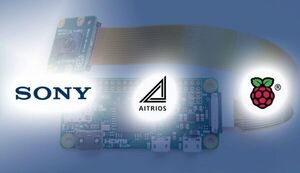
Raspberry Pi Receives Strategic Investment from Sony Semiconductor Solutions Corporation Establishing strategic partnership for the further enhancement of the edge AI solution development
"Sony Semiconductor Solutions Corporation (“SSS”) and Raspberry Pi Ltd. (“RPL”) today announced the agreement by SSS to make a strategic investment in RPL. This minority investment cements the relationship between the two companies, to provide a development platform for SSS’s edge AI devices to the worldwide community of Raspberry Pi users. “Our goal is to provide new value to a variety of industries and support them in solving issues using our innovative edge AI sensing technology built around image sensors,” said Terushi Shimizu, President and CEO of Sony Semiconductor Solutions Corporation. “We are very pleased to be partnering with Raspberry Pi Ltd. to bring our AITRIOS™ platform -- which supports the development of unique and diverse solutions utilizing our edge AI devices -- to the Raspberry Pi user and developer community, and provide a unique development experience.” “Sony Group is a longstanding and valued strategic partner. Our pre-existing relationship encompasses contract manufacturing, and the provision of image sensors and other semiconductor products,” said Eben Upton, CEO of Raspberry Pi Ltd. “This transaction will allow us to expand our partnership, bringing Sony Semiconductor Solutions’ line of AI products to the Raspberry Pi ecosystem, and helping our users to build exciting new machine-learning applications at the edge.”" [...]
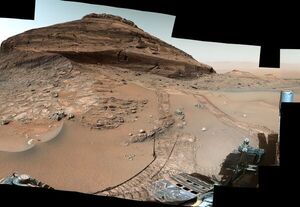
NASA’s Curiosity Mars Rover Gets a Major Software Upgrade
"The update brings loads of improvements, the most significant being new driving capabilities. Years in the making, a major software update that has been installed on NASA’s Curiosity rover will enable the Mars robot to drive faster and reduce wear and tear on its wheels. Those are just two of about 180 changes implemented during the update, which required the team to put Curiosity’s science and imaging operations on hold between April 3 and April 7. “The flight software is essential to our mission, so this is a big deal for our team,” said Curiosity Project Manager Kathya Zamora-Garcia of NASA’s Jet Propulsion Laboratory in Southern California. “This is a major software update, and we had to make sure we did it right.” Planning for this update goes back to 2016, when Curiosity last received a software overhaul. Some changes this time around are as small as making corrections to the messages the rover sends back to mission controllers on Earth." [...]
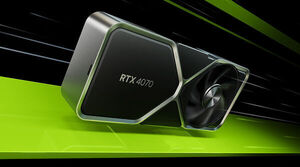
New GeForce RTX 4070 GPU Dramatically Accelerates Creativity
"The GeForce RTX 4070 GPU, the latest in the 40 Series lineup, is available today starting at $599. It comes backed by NVIDIA Studio technologies, including hardware acceleration for 3D, video and AI workflows; optimizations for RTX hardware in over 110 popular creative apps; and exclusive NVIDIA Studio apps like Omniverse, Broadcast, Canvas and RTX Remix. VLC media player added RTX Video Super Resolution to automatically upscale video to 4K resolution and beyond. GeForce RTX 40 and 30 Series GPU owners will immediately benefit from improved virtual fidelity. The RTX Remix runtime for remastering classic games is now available as open source on GitHub. It empowers the mod development community to extend Remix’s game compatibility and feature set." [...]

Intel Foundry and Arm Announce Multigeneration Collaboration on Leading-Edge SoC Design
"Intel Foundry Services (IFS) and Arm today announced a multigeneration agreement to enable chip designers to build low-power compute system-on-chips (SoCs) on the Intel 18A process. The collaboration will focus on mobile SoC designs first, but allows for potential design expansion into automotive, Internet of Things (IoT), data center, aerospace and government applications. Arm® customers designing their next-generation mobile SoCs will benefit from leading-edge Intel 18A process technology, which delivers new breakthrough transistor technologies for improved power and performance, and from IFS’s robust manufacturing footprint that includes U.S.- and EU-based capacity. “There is growing demand for computing power driven by the digitization of everything, but until now fabless customers have had limited options for designing around the most advanced mobile technology,” said Pat Gelsinger, CEO of Intel Corporation. “Intel’s collaboration with Arm will expand the market opportunity for IFS and open up new options and approaches for any fabless company that wants to access best-in-class CPU IP and the power of an open system foundry with leading-edge process technology.” “Arm’s secure, energy-efficient processors are at the heart of hundreds of billions of devices and the planet’s digital experiences,” said Rene Haas, CEO of Arm. “As the demands for compute and efficiency become increasingly complex, our industry must innovate on many new levels." [...]
Nordic Semiconductor redefines its leadership in Bluetooth Low Energy with the announcement of the nRF54 Series
"The market-share leader in Bluetooth Low Energy extends its commitment to innovation with its new, fourth-generation low power wireless SoCs. The first SoC in the nRF54 Series, the nRF54H20, is ideal for disruptive IoT applications demanding high processing power, excellent energy efficiency, and state-of-the-art security Nordic Semiconductor, a leader in low power, high performance wireless connectivity for the IoT, today announces the first introduction in its fourth generation of multiprotocol Systems-on-Chip (SoCs), the nRF54H20. Extending the company’s pioneering approach in Bluetooth® Low Energy (Bluetooth LE), the nRF54 Series follows Nordic’s award-winning nRF51, nRF52, and nRF53 Series, and introduces an innovative new hardware architecture fabricated on the GlobalFoundries 22FDX® leading process node. The nRF54H20 belongs to the nRF54H Series, the “H” branch of the wider nRF54 Series. Capable of supporting Bluetooth 5.4 and future Bluetooth specifications, plus LE Audio, Bluetooth mesh, Thread, Matter, and more, the nRF54H20 will be the foundation for a new wave of revolutionary IoT end-products. Its combination of advanced features will enable complex end-products that have previously been unfeasible." [...]
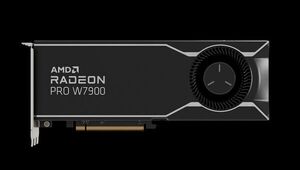
AMD Unveils the Most Powerful AMD Radeon PRO Graphics Cards, Offering Unique Features and Leadership Performance to Tackle Heavy to Extreme Professional Workloads
" AMD (NASDAQ: AMD) today announced the AMD Radeon™ PRO W7000 Series graphics, its most-powerful workstation graphics cards to date. The AMD Radeon™ PRO W7900 and AMD Radeon™ PRO W7800 graphics cards are built on groundbreaking AMD RDNA™ 3 architecture, delivering significantly higher performance than the previous generation and exceptional performance-per-dollar compared to the competitive offering. The new graphics cards are designed for professionals to create and work with high-polygon count models seamlessly, deliver incredible image fidelity and color accuracy, and run graphics and compute-based applications concurrently without disruption to workflows. AMD Radeon PRO W7000 Series graphics cards feature the world’s first workstation GPU architecture based on AMD’s advanced chiplet design, providing real-world multi-tasking performance and incredible power efficiency. The new graphics cards are also the first professional workstation GPUs to offer the new AMD Radiance Display Engine™ featuring DisplayPort™ 2.1 that delivers a superior visual experience, higher resolutions and more available colors than ever before. The AMD Radeon PRO W7900 graphics card, designed for extreme workloads, features 61 TFLOPS (FP32) peak single precision performance, offering 1.5X higher geomean performance on the SPECviewperf 2020 benchmark." [...]

Renesas Samples Its First 22-nm Microcontroller
"Wireless Microcontroller Integrating Bluetooth® 5.3 Low Energy Employs Most Advanced Process Node Available for MCUs Renesas Electronics Corporation (TSE:6723), a premier supplier of advanced semiconductor solutions, today announced that it has produced its first microcontroller (MCU) based on advanced 22-nm process technology. By employing state-of-the-art process technology, Renesas can provide customers with superior performance at lower power consumption driven by reduced core voltages. The advanced process technology also offers the ability to integrate a rich feature set including functions such as RF. Additionally, the advanced process node uses a smaller die area for the same functionality, resulting in smaller chips with higher integration of peripherals and memory. The first chip produced on the new 22-nm process is an extension to Renesas’ popular RA family of 32-bit Arm® Cortex®-M microcontrollers. This new wireless MCU delivers Bluetooth® 5.3 Low Energy (LE) with the integration of a software-defined radio (SDR)." [...]
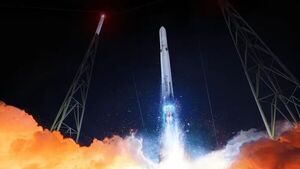
Relativity goes ‘all in’ on larger reusable rocket, shifting 3D-printing approach after first launch
"Relativity Space is shifting its strategy in an attempt to accelerate work on the reusable rocket it’s developing, the company announced on Wednesday. Chief among the changes: adjusting its manufacturing approach to blend its 3D-printing-first approach with traditional metal-bending techniques. The company is going “all in” on developing its larger Terran R rocket, CEO Tim Ellis told CNBC, effectively shelving its Terran 1 vehicle after one launch. “We’re putting all energy and resources on getting Terran R to market as quickly as possible and then getting to a higher rate of reuse for scaling the launch volumes,” Ellis said. Last month, the debut flight of Relativity’s 3D-printed Terran 1 rocket launched from Florida – but failed to reach orbit after an issue about three minutes into the mission. While Ellis hailed the inaugural launch as a success that passed a number of milestones, he noted that it meant Relativity “had some decisions to make” about whether to continue building and launching Terran 1 rockets." [...]
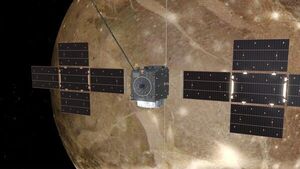
The Juice Mission: Japan Joins Esa To Head To The Icy Moons
"This month, the JUpiter ICy moon Explorer (JUICE) is set to embark on an eight year journey to the icy moons of our Solar System’s largest planet. While the moons have been previously observed by Jupiter explorers such as NASA’s Galileo, this is the first time a dedicated mission will visit the moons with an instrument suite targeted at their exploration. JUICE is an ESA-led mission, with strong involvement from Japan in both the instrument development and science teams. The strangest habitable environments in the Solar System? Jupiter has three icy moons whose surfaces are covered with solid ice but seem to harbour a global liquid water ocean below. Starting closest to Jupiter and moving out, these moons are Europa, Ganymede, and Callisto." [...]
Ciência e Tecnologia

James Webb Space Telescope Images Challenge Theories of How Universe Evolved
"AUSTIN, Texas — The James Webb Space Telescope (JWST) appears to be finding multiple galaxies that grew too massive too soon after the Big Bang, if the standard model of cosmology is to be believed. In a study published in Nature Astronomy, researchers at The University of Texas at Austin find that six of the earliest and most massive galaxy candidates observed by JWST stand to contradict the prevailing thinking in cosmology. That’s because other researchers estimate that each galaxy is seen from between 500 million and 700 million years after the Big Bang, yet measures more than 10 billion times as massive as our sun. One of the galaxies even appears to be more massive than the Milky Way, despite the fact that our own galaxy had billions of more years to form and grow. “If the masses are right, then we are in uncharted territory,” said Mike Boylan-Kolchin, associate professor of astronomy who led the study. “We’ll require something very new about galaxy formation or a modification to cosmology." [...]
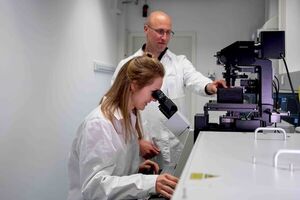
Nanotubes as optical stopwatch for the detection of neurotransmitters
"Carbon nanotubes not only shine brighter in the presence of dopamine, but also for longer. The time period of shining serves as a new parameter to detect biological messenger substances. An interdisciplinary research team from Bochum and Duisburg has found a new way to detect the important neurotransmitter dopamine in the brain. The researchers used carbon nanotubes for this purpose. In earlier studies, the team led by Professor Sebastian Kruss had already shown that the tubes glow brighter in the presence of dopamine. Now the interdisciplinary group showed that the duration of the glow also changes." [...]
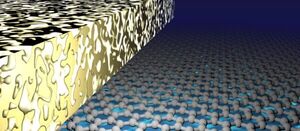
New kind of quantum transport discovered in a device combining high-temperature superconductors and graphene
"Researchers combine graphene and high-temperature superconductors in a single device, demonstrating a theoretically predicted phenomena in practice for the first time and potentially paving the way for improved devices and new physics Developing new quantum devices relies on controlling how electrons behave. A material called graphene, a single layer of carbon atoms, has fascinated researchers in recent years because its electrons behave as if they have no mass. For decades, scientists have also been interested in high-temperature superconductors: ceramic materials where electron interactions yield a macroscopic quantum state where electrons pair with each other. They do so at a temperature above the usual superconducting temperature of metals, which approaches absolute zero. In a recent study published in Physical Review Letters, researchers from the SUNY Polytechnic Institute, Stony Brook University and the Brookhaven National Laboratory in the US, along with Aalto University in Finland, demonstrated a new electronic device that employs the unique ways in which electrons behave in these two materials – graphene and high-temperature superconductors. The experiment, led by Sharadh Jois and Ji Ung Lee from SUNY with the support of theoretical work done by Jose Lado, assistant professor at Aalto, demonstrated a new quantum device that combines both graphene and an unconventional high-temperature superconductor." [...]
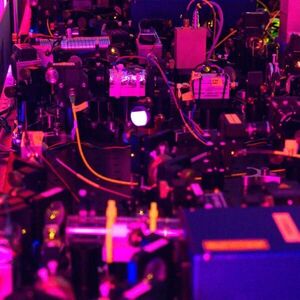
Second stage for quantum simulation project PASQuanS
"The EU flagship project PASQuanS2 with 25 partners coordinated by Immanuel Bloch, Director at MPQ and Chair at LMU, is funded by the European Union. Quantum technologies are on the rise. One promising area is the simulation of quantum many-body systems – the imitation of complex quantum systems consisting of many interacting particles in extremely controlled model systems. They enable the demonstration of fundamental quantum mechanical effects in their pure form, e.g. in superconductors, and allow deep insights into the quantum mechanics of these systems. Also, they can be used to create completely new physical systems." [...]
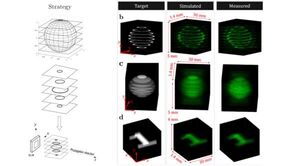
New light sheet holography overcomes the depth perception challenge in 3D holograms
"Method can depict holograms – viewable from any angle as if physically present – with continuous depth Holography – the use of light projection to display images – can be used to construct holograms, which are three-dimensional structures of light that depict true-to-life objects and scenes. While today’s technologies can’t yet produce the incredibly lifelike holograms of science fiction movies, researchers from the Harvard John A. Paulson School of Engineering and Applied Sciences (SEAS) have made a significant leap toward this goal. A team of scientists and engineers led by Federico Capasso, the Robert L. Wallace Professor of Applied Physics and Vinton Hayes Senior Research Fellow in Electrical Engineering at SEAS, has reported in Nature Photonics an entirely new way of creating holograms using threads of light layered to construct 2D sheets containing tightly-controlled arrays of light. These sheets can then be tightly stacked – like a pile of deli cheese – to depict 3D objects. “This research leverages in an innovative way the widely used and commercially established technology of spatial light modulators to shape light as it propagates, creating an entirely new class of holograms,” says Capasso. “I foresee that this holography method will have impact on virtual and augmented reality, biological imaging, volumetric displays, human-computer interactions, interactive educational tools, and more.” Traditional holography methods arrange light in planes moving away from the eye of the viewer like a series of sequential dominoes, which is problematic because the layers farthest away become harder to see." [...]
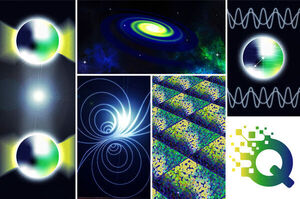
Five Ways QSA is Advancing Quantum Computing
"Since its launch in 2020, the Quantum Systems Accelerator has enabled major progress in quantum information science – including record-setting sensors, smarter algorithms, and demonstrating a 256-atom quantum device can deliver science results Quantum computers could someday perform certain calculations faster than classical computers, with applications in science, medicine, security, finance, and beyond – but first, researchers need to improve the underlying science and technology. Since its launch in 2020, the Quantum Systems Accelerator (QSA) has already made major advances in both hardware and programming, improving the quantum tools that researchers hope will help solve some of humanity’s biggest questions. QSA is one of the Department of Energy’s five national quantum information science research centers with a focus on all three major technologies for quantum computing: superconducting circuits, trapped-ion systems, and neutral atoms. “We believe there are synergies between these three big technologies and that each one may have unique abilities and applications for solving different kinds of problems,” said Rick Muller, the director of QSA and a senior manager at Sandia National Laboratories. “By looking at all three of them together, we can more easily find their strengths, apply innovations across technologies, and design a path forward to a universal quantum computer.” Led by Lawrence Berkeley National Laboratory (Berkeley Lab), QSA brings together more than 250 experts from 14 other institutions: Sandia National Laboratories, University of Colorado Boulder, MIT Lincoln Laboratory, Caltech, Duke University, Harvard University, Massachusetts Institute of Technology, Tufts University, UC Berkeley, University of Maryland, University of New Mexico, University of Southern California, University of Texas at Austin, and Canada’s Université de Sherbrooke. Together, QSA researchers are developing ways to better control qubits (the building blocks of quantum computers), finding algorithms and applications for current and emerging quantum information systems, and speeding their transfer to industry." [...]

An easier way to get bugs out of programming languages
"Developed at MIT, D2X is a new tool that makes it easy to debug any domain-specific programming language. Sometime in 2019, MIT PhD student Ajay Brahmakshatriya formulated a simple, though still quite challenging, goal. He wanted to make it possible for people who had expertise in a particular domain — such as climate modeling, bioinformatics, or architecture — to write their own programming languages, so-called domain-specific languages (or DSLs), even if they had little or no experience in creating programming languages. A member of the research group headed by MIT Professor Saman Amarasinghe in the Institute’s Computer Science and Artificial Intelligence Laboratory (CSAIL), Brahmakshatriya wanted these languages to come with all the auxiliary functions people would need to comfortably utilize them, including tools for debugging. This process for getting rid of errors in a piece of software is essential, he and Amarasinghe agreed, as they have called the lack of debugging support “the Achilles heel for DSLs.” It’s been a productive few years for both of them. In 2021, Brahmakshatriya and Amarasinghe introduced BuildIt, a software package that greatly simplifies the task of creating DSLs." [...]
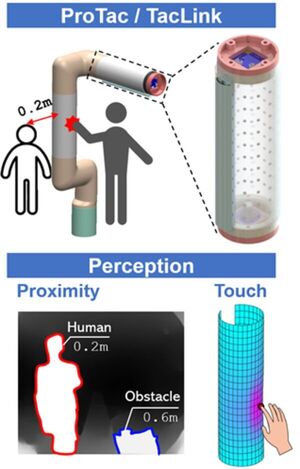
Research in Japan Shows the Way Toward Tactile and Proximity Sensing in Large Soft Robots
"Researchers developed an innovative robotic link with multimodal perception to help make human-robot interactions safer and more convenient To make human-robot interactions safer and more fruitful, robots should be capable of sensing their environment. In a recent study, researchers from Japan Advanced Institute of Science and Technology (JAIST) developed a novel robotic link with tactile and proximity sensing capabilities. Additionally, they created a simulation and learning framework that can be employed to train the robotic link to sense its environment. Their findings will pave the way to a future where humans and robots can operate harmoniously in close proximity. In recent years, robots have become incredibly sophisticated machines capable of performing or assisting humans in all tasks. The days of robots functioning behind a security barrier are long gone, and today we may anticipate robots working alongside people in close contact." [...]
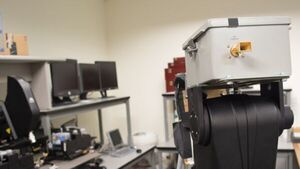
NYU Wireless at NYU Tandon releases NYUSIM 4.0 to accelerate standardization efforts of 6G wireless communications
"NYU WIRELESS, a leading research center in wireless communications at the New York University Tandon School of Engineering, today announced the launch of NYUSIM 4.0, the world's first wireless channel simulator capable of generating real-world wireless channels above 100 GHz. NYUSIM 4.0 is a groundbreaking open-source sub-THz and mmWave wireless channel simulator developed in MATLAB that is free to download and use by global industrial and academic institutions. The first three versions of NYUSIM have been downloaded over 100,000 times since the release of NYUSIM 1.0 in 2016. NYUSIM 4.0 is specifically designed to help accelerate the standardization efforts for 6G wireless communications, which is expected to kick off in 2025. "The release of NYUSIM 4.0 marks a significant milestone in the development of wireless communication technologies,” said Professor Ted Rappaport, the founder of NYU WIRELESS. “It empowers researchers and engineers across the globe with a powerful tool for designing wireless systems that can operate above 100 GHz, a frequency range that has long been considered challenging due to its unique propagation characteristics." [...]

Flow batteries for grid-scale energy storage
"A modeling framework developed at MIT can help speed the development of flow batteries for large-scale, long-duration electricity storage on the future grid. In the coming decades, renewable energy sources such as solar and wind will increasingly dominate the conventional power grid. Because those sources only generate electricity when it’s sunny or windy, ensuring a reliable grid — one that can deliver power 24/7 — requires some means of storing electricity when supplies are abundant and delivering it later when they’re not. And because there can be hours and even days with no wind, for example, some energy storage devices must be able to store a large amount of electricity for a long time. A promising technology for performing that task is the flow battery, an electrochemical device that can store hundreds of megawatt-hours of energy — enough to keep thousands of homes running for many hours on a single charge. Flow batteries have the potential for long lifetimes and low costs in part due to their unusual design." [...]
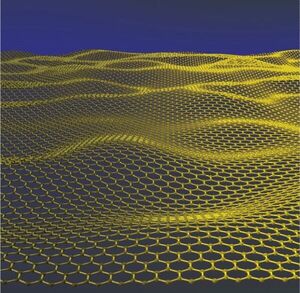
Wonder material graphene claims yet another superlative
"In a paper published in Nature this week (13 Apr 2023), researchers from The University of Manchester report record-high magnetoresistance that appears in graphene under ambient conditions. Materials that strongly change their resistivity under magnetic fields are highly sought for various applications and, for example, every car and every computer contain many tiny magnetic sensors. Such materials are rare, and most metals and semiconductors change their electrical resistivity only by a tiny fraction of a percent at room temperature and in practically viable magnetic fields (typically, by less than a millionth of 1 %). To observe a strong magnetoresistance response, researchers usually cool materials to liquid-helium temperatures so that electrons inside scatter less and can follow cyclotron trajectories. Now a research team led by Professor Sir Andre Geim has found that good old graphene that seemed to be studied in every detail over the last two decade exhibits a remarkably strong response, reaching above 100% in magnetic fields of standard permanent magnets (of about 1,000 Gauss). This is a record magnetoresistivity among all the known materials." [...]
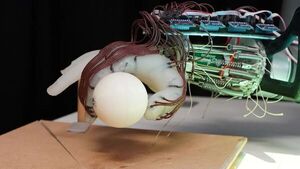
It’s all in the wrist: energy-efficient robot hand learns how not to drop the ball
"Researchers have designed a low-cost, energy-efficient robotic hand that can grasp a range of objects – and not drop them – using just the movement of its wrist and the feeling in its ‘skin’. Grasping objects of different sizes, shapes and textures is a problem that is easy for a human, but challenging for a robot. Researchers from the University of Cambridge designed a soft, 3D-printed robotic hand that cannot independently move its fingers but can still carry out a range of complex movements. The robot hand was trained to grasp different objects and was able to predict whether it would drop them by using the information provided by sensors placed on its ‘skin’. This type of passive movement makes the robot far easier to control and far more energy-efficient than robots with fully motorised fingers. The researchers say their adaptable design could be used in the development of low-cost robots that are capable of more natural movement and can learn to grasp a wide range of objects." [...]
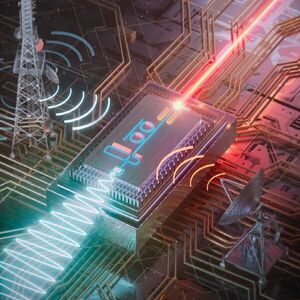
Photonic filter separates signals from noise to support future 6G wireless communication
"Multi-functional filter could help advance autonomous driving and the Internet of Things Researchers have developed a new chip-sized microwave photonic filter to separate communication signals from noise and suppress unwanted interference across the full radio frequency spectrum. The device is expected to help next-generation wireless communication technologies efficiently convey data in an environment that is becoming crowded with signals from devices such as cell phones, self-driving vehicles, internet-connected appliances and smart city infrastructure. “This new microwave filter chip has the potential to improve wireless communication, such as 6G, leading to faster internet connections, better overall communication experiences and lower costs and energy consumption for wireless communication systems,” said researcher Xingjun Wang from Peking University. “These advancements would directly and indirectly affect daily life, improving overall quality of life and enabling new experiences in various domains, such as mobility, smart homes and public spaces.” In the Photonics Research journal co-published by Chinese Laser Press and Optica Publishing Group, the researchers describe how their new photonic filter overcomes the limitations of traditional electronic devices to achieve multiple functionalities on a chip-sized device with low power consumption. They also demonstrate the filter’s ability to operate across a broad radio frequency spectrum extending to over 30 GHz, showing its suitability for envisioned 6G technology. “As the electro-optic bandwidth of optoelectronic devices continues to increase unstoppably, we believe that the integrated microwave photonics filter will certainly be one of the important solutions for future 6G wireless communications,” said Wang." [...]
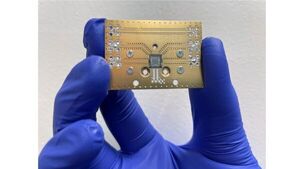
How Argonne is pushing the boundaries of quantum technology research
"Quantum mechanics holds the potential to revolutionize computing, communication and sensing. Argonne National Laboratory is leading the way. The U.S. Department of Energy’s (DOE) Argonne National Laboratory is making exciting advances in quantum information science (QIS). QIS explores how tiny particles sense and relay information in new ways. The research could lead to a quantum computer that performs previously impossible calculations or an exceptionally secure network for transmitting data. The recent milestones play out on small scales: across the space of a few seconds or across a single layer of atoms." [...]

Tiny biobattery with 100-year shelf life runs on bacteria
"Watson College Professor Seokheun “Sean” Choi aims to make fuel cells for portable, storable and on-demand power generation. Last fall, Professor Seokheun “Sean” Choi and his Bioelectronics and Microsystems Laboratory published their research into an ingestible biobattery activated by the Ph factor of the human intestine. Now, he and PhD student Maryam Rezaie have taken what they learned and incorporated it into new ideas for use outside the body. A new study in the journal Small, which covers nanotechnology, shares the results from using spore-forming bacteria similar to the previous ingestible version to create a device that potentially would still work after 100 years. “The overall objective is to develop a microbial fuel cell that can be stored for a relatively long period without degradation of biocatalytic activity and also can be rapidly activated by absorbing moisture from the air,” said Choi, a faculty member in the Department of Electrical and Computer Engineering at the Thomas J. Watson College of Engineering and Applied Science. “We wanted to make these biobatteries for portable, storable and on-demand power generation capabilities,” Choi said." [...]

Gravitational waves could indicate transition to strange quark matter
"Gravitational waves could reveal whether the quark soup that existed in the early Universe is created in neutron-star mergers Telltale signatures in gravitational-wave signals from merging neutron stars should reveal what happens to matter at the extreme pressures generated during such mergers, calculations by RIKEN researchers predict1. If you took some water and compressed it with a piston, it would shrink as the molecules get pushed closer together. If you continued ramping up the pressure, you’d reach a point where the atoms collapse and form an ultra-dense soup of neutrons and protons. The only place in the Universe where this happens is neutron stars, the collapsed remnants of burned-out stars, and it produces mind-boggling densities—one teaspoon of such material weighs several hundred billion kilograms. But what would happen if you continued to increase the pressure still further? Not even astrophysicists know the answer to that." [...]
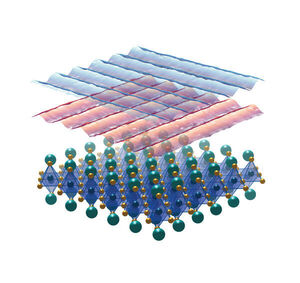
Stripes within crystals hint at behavior of electrons in quantum systems
"A hidden pattern of electrons could provide clues to exotic quantum behavior Hidden stripes in a crystal could help scientists understand the mysterious behavior of electrons in certain quantum systems, including high-temperature superconductors, an unexpected discovery by RIKEN physicists suggests1. The electrons in most materials interact with each other very weakly. But physicists often observe interesting properties in materials in which electrons strongly interact with each other. In these materials, the electrons often collectively behave as particles, giving rise to ‘quasiparticles’. “A crystal can be thought of like an alternative universe with different laws of physics that allow different fundamental particles to live there,” says Christopher Butler of the RIKEN Center for Emergent Matter Science. Butler and colleagues examined a crystal in which a layer of nickel atoms was arranged in a square lattice, like a chessboard." [...]
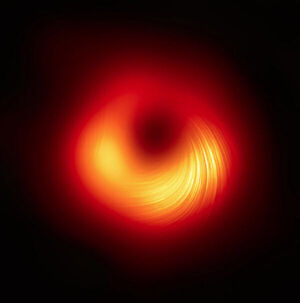
Quantum ‘magic’ could help explain the origin of spacetime
"Physicists relate the quantum property of ‘magic’ to the chaotic nature of black holes for the first time A quantum property dubbed ‘magic’ could be the key to explaining how space and time emerged, a new mathematical analysis by three RIKEN physicists suggests1. It’s hard to conceive of anything more basic than the fabric of spacetime that underpins the Universe, but theoretical physicists have been questioning this assumption. “Physicists have long been fascinated about the possibility that space and time are not fundamental, but rather are derived from something deeper,” says Kanato Goto of the RIKEN Interdisciplinary Theoretical and Mathematical Sciences (iTHEMS). This notion received a boost in the 1990s, when theoretical physicist Juan Maldacena related the gravitational theory that governs spacetime to a theory involving quantum particles. In particular, he imagined a hypothetical space—which can be pictured as being enclosed in something like an infinite soup can, or ‘bulk’—holding objects like black holes that are acted on by gravity. Maldacena also imagined particles moving on the surface of the can, controlled by quantum mechanics." [...]
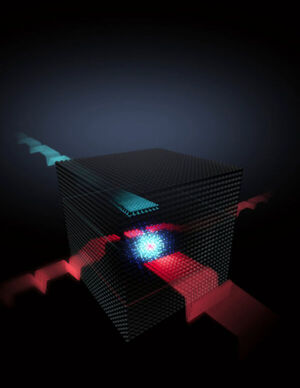
Modeling longer-lived holes in silicon quantum dots
"The development of quantum computers will benefit from a new model that models spin in tiny silicon dots A theoretical model developed by three RIKEN physicists for optimizing semiconductor nanodevices will be helpful for scaling up quantum hardware1. An electron trapped in a semiconductor device offers a promising building block for future quantum computers. Electrons have a property called spin, which, when measured, exists in one of two states—like the binary information, or bits, used in conventional computing. But due to its quantum nature, spin can exist in a superposition of the two states. These quantum bits, or qubits, lie at the heart of quantum information processing. Electrons, or their positively charged counterparts known as holes, can be isolated in tiny semiconductor blobs called quantum dots." [...]
Projetos Maker
Diversos Projetos interessantes.
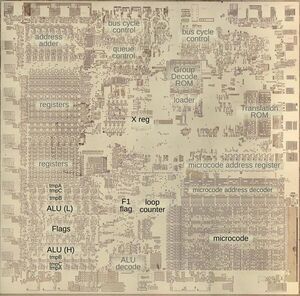
Reverse-engineering the division microcode in the Intel 8086 processor
"While programmers today take division for granted, most microprocessors in the 1970s could only add and subtract — division required a slow and tedious loop implemented in assembly code. One of the nice features of the Intel 8086 processor (1978) was that it provided machine instructions for integer multiplication and division. Internally, the 8086 still performed a loop, but the loop was implemented in microcode: faster and transparent to the programmer. Even so, division was a slow operation, about 50 times slower than addition. I recently examined multiplication in the 8086, and now it's time to look at the division microcode.1 (There's a lot of overlap with the multiplication post so apologies for any deja vu.) The die photo below shows the chip under a microscope." [...]

small display BIG DIGITS project
"Big digits (2x2 cells) for character displays. " [...]
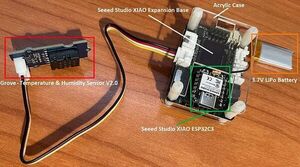
IoT weather station with Seeed Studio XIAO ESP32C3
"This project is an excellent opportunity to learn more about IoT and weather monitoring, and how to use Seeed Studio products to build your IoT projects. Background Weather monitoring has a long and rich history, dating back to ancient civilizations who relied on observations of to predict weather patterns. Over time, has become increasingly sophisticated, with the development of modern technologies such as satellites, radar, and computer models enabling more accurate and reliable weather forecasting. Today, weather monitoring plays a critical role in a variety of industries, including agriculture, construction, transportation, and outdoor recreation. Accurate and timely weather data can help inform decision-making, , and reduce the risk of weather-related damage and loss. The development of (IoT) devices has further revolutionized weather monitoring, allowing individuals to create their own personal weather stations using affordable and accessible technologies." [...]

ChatGPT is not an artist
"Here is my 50 cents on using ChatGPT with Arduino and its drawbacks for electronic prototyping. Project summary A couple of weeks back I decided to test ChatGPT 3.5 in the art of Arduino project-making. For starters, I assembled a simple prototype with an Arduino connected to an 8x8 RGB matrix, and asked the AI to program it and display a heart. To my deep surprise, the code compiled and displayed... something, but definitely not a heart! Let's briefly dissect what went wrong and try to conclude whether ChatGPT is actually useful for electronics enthusiasts like you and me. ChatGPT is not perfect..." [...]

DIY RFID Lock using RYRR10S module
"Simple DIY Lock using RYRR10S RFID/NFC module Story In our everyday life, everybody uses RFID Technology, most of the times without knowing it. RFID history dates back to the 1940s, It has vast range of applications, widely used in various industries/fields like Logistics, Supply Chain, Security/Access Control, Healthcare etc. and many more. RFID stands for Radio-frequency identification. It uses electromagnetic fields to automatically identify and track tags attached to objects. An RFID system consists of a tiny radio transponder, a radio receiver and transmitter." [...]

RP2040 with PIO and DMA to address WS2812B LEDs
"I love the WS2812B (aka SK6812) addressable LEDs: they are inexpensive and available in different packages. I have used them in different projects, including the MetaClockClock one. I used the NXP Kinetis for these projects, but because they are not available any more, for a new project we had to choose a new microcontroller, with the Raspberry Pi Pico RP2040 as the winner. Outline In that project, the MCU needs to drive a total of 1024 SK6812 RGB LEDs. To keep the refresh rate reasonable, the LEDs are organized in 8 stripes with 128 LEDs each. The Kinetis K22 or K64 with DMA can easily produce the needed 800 kHz protocol using DMA, see Tutorial: Adafruit WS2812B NeoPixels with the Freescale FRDM-K64F Board – Part 1: Hardware." [...]

IoT-Based Remote Patient Monitoring System to Measure Vital
"When we are talking about major vital signs of a human body, there are four major parameters that we need to be aware of, they are body temp When we are talking about major vital signs of a human body, there are four major parameters that we need to be aware of, they are body temperature, heartrate, breathrate, bloodpressure, and due to COVID, oxygen saturation has become a major parameter that we need to be aware of. In this tutorial, we will be making a simple Arduino Nano 33 IoT-based device with multiple sensors. The device can measure some vital parameters of the human body. The device will be like a DIY multi-para monitor that you see in ICUs, a lot simpler and made of cheap sensors not meant for actual medical use. We will be using the new Arduino Nano 33 IOT for this purpose and we will try to make this device as simple as possible.In this article, we will build a complete IoT based health monitoring system that can measure and monitor all vital parameters of the human body. So, let's get started and for more Industrial IoT Solutions visit the website." [...]

LOGIX: Creating a Logic Gates Training Board
"If you're interested in learning about the most fundamental basics of electronics then LOGIX will help you through Logic gates are electronic circuits that perform logical operations on one or more input signals to produce an output signal. They are the building blocks of digital circuits and are used to create complex digital systems such as microprocessors, computers, and other digital devices. In this project, we will discuss how to create a Logic Gates Training Board, which we call the LOGIX. The LOGIX is a circuit board that can receive any logic gate and produce an output signal based on the used gate. We will explain how each of the most commonly used logic gates work and demonstrate how they can be combined to create more complex circuits. Supplies I designed and Assembled the LOGIX in my home-lab so if you wan to follow the same process then you may need the following tools: - Digital Microscope Camera LINKMICRO - Solder Paste CHIPQUIK SMDLTLFP10T5 - Flux removal Solvent - Tape - Spatula - Hot Plate MHP30 - Solder Iron Weller WE1010NA - Precision tweezers" [...]
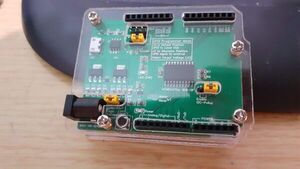
A complete ATTiny1616 Dev Solution
"A few weeks ago, I started looking into alternative development solutions to reduce the effect of hard-to-get or more expensive-than-usual ATMEGA328 chips. One of the chips that I found to have potential was the ATTiny1616. There seemed to be quite a lot of stock, and the prices were reasonable. Some additional hardware, like a dedicated UPDI programmer, had to be designed or bought, as the ATTiny1616 required UPDI to upload and flash code. While the breakout worked flawlessly, I found the programming setup awkward and cumbersome. That was the cue to take the next step and create something that was easier to work with." [...]
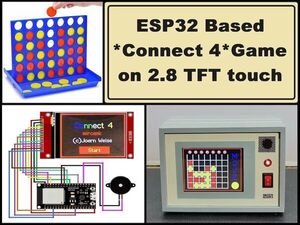
DIY Connect 4 Game on 2.8 inch TFT touch Display
"An ESP32 microcontroller version of Connect4 game, which is played on a 2.8 inch color TFT touch display. Connect Four is a two-player connection rack game, in which the players choose a color and then take turns dropping colored tokens into a seven-column, six-row vertically suspended grid. The pieces fall straight down, occupying the lowest available space within the column. The objective of the game is to be the first to form a horizontal, vertical, or diagonal line of four of one's own tokens. This time I will present you an ESP32 microcontroller version of this game, which is played on a color TFT touch display. You can find the original project on Joern Weise GitHub (https://github.com/M3taKn1ght/Blog-Repo/tree/master/4_Gewinnt), and I slightly modified the code by adding some sounds that made the game even more interesting and realistic." [...]
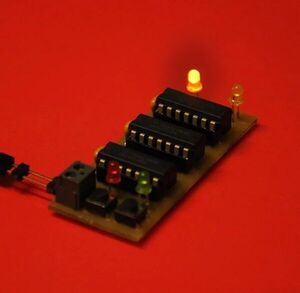
Build an 8-bit Microcontroller - Part I.
"My Instructables were mostly about MCU-related projects until now, this one will be no different, only this time around we will build the microcontroller ourselves. It's going to be a bigger project and so it will be divided into several separate units. You are reading the first one. You will see a lot of components, PCBs, datasheets, measurements, and test equipment involved and some iterations might occur but the target is to create a programmable microcontroller and have it run stuff. Since I will build it myself, it isn't going to be as much micro, maybe macrocontroller is a better word for it. We're going to start with simple circuits but we are going to turn them into complex assemblies later." [...]

DIY Automated Blinds
"I designed and built my own Smart blinds, To maximise privacy And light coming in. After extensively researching various smart blinds, I realized that none of them met my needs. I wanted both privacy and natural light, but with traditional blinds, it’s usually one or the other. So, I decided to design my own blinds that rise from the bottom. This way, I can raise them to head height for privacy while still allowing plenty of light in from above. " [...]
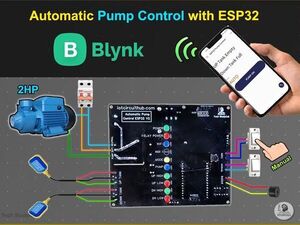
IoT Based Water Level Controller Using ESP32 Blynk
"In this Internet of Things project, I have shown how to make the IoT-based water pump controller using ESP32 Blynk & float sensor switches. This water level monitoring system will also check the water level in both the overhead tank and underground water tank and accordingly control the water pump automatically in AUTO mode. This Water Level Controller has the following features: - Monitor the Water Level in both the overhead tank and underground tank on the Blynk IoT app. - Change Mode and control Pump from Blynk IoT App. - If WiFi is not connected monitor the water level with indicator LEDs. - The pump will automatically turn OFF, for the LOW water level in the underground tank." [...]
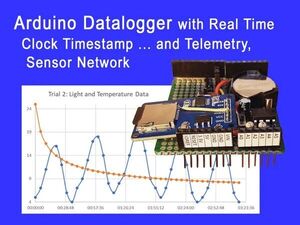
Arduino Data Logging Shield With Real Time Clock Timestamp ... and Telemetry, Sensor Network
"A data logger is a device that captures sensor information and stores it for later use. It can use multiple sensors and collect data over time to record events, analyze for trends or help predict events. Using a microcontroller such as an Arduino is an excellent device to do this. In this Instructable, I show how to use an Arduino Uno for data logging complete with a DS1307 real time clock (RTC). Although this project is a DIY shield, I included Fritzing images for setting up on a breadboard if you do not want to solder. Multiple sensor readings can be saved to the microSD card along with a time (down to the second) and date from the RTC." [...]

Creating a DCO-based Audio Synthesizer With an Arduino Nano
"In this project, learn to create a digitally-controlled oscillator or DCO-based audio synthesizer with an Arduino Nano or an Arduino Uno. I love music, and I also love electronics. For years, I’ve been building musical electronic devices, mostly in service to my electric guitar playing. After building and modifying a few tube amps and effects pedals, I decided to branch out into the realm of audio synthesis. I’ve often dreamed of creating my own Eurorack synthesizer, one module at a time, but for my first synthesizer project, I decided to start with a stand-alone keyboard. My finished product—a modified toy keyboard In this project, I removed the existing electronics and replaced them with a digitally-controlled oscillator (DCO)-based audio synthesizer with an Arduino Nano at its heart." [...]

EKO Flower Pot
"Introducing EKO Flower Pot, the ultimate solution for plant lovers! EKO Flower Pot is a smart device designed to help monitor the health and well-being of plants. It is equipped with sensors that read air and ground temperature, humidity, and UV index, which are crucial factors for ensuring optimal plant growth. The device works by measuring the environment around the plant and sending the data to a central hub or gateway via MQTT protocol, a lightweight messaging protocol commonly used in IoT applications. The gateway is usually a Raspberry Pi or a similar device that is connected to the internet and can communicate with the EKO Flower Pot using MQTT. Once the data is received by the gateway, it can be processed and analyzed using software such as Node-RED, an open-source flow-based programming tool that allows users to easily create and deploy IoT applications." [...]
Secção Videos
Videos interessantes.
That's all Folks!



